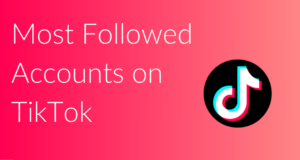The United States hit quite a bombshell a few years back. The recession that hit was the worst most of us have ever experienced. While we are recovering well now, the long-term effects of that setback are starting to make their debut. Yes, we are well past the time when we trusted big business, but many people are still skittish about even small businesses.
One thing that has started to set the successful ones apart is their take on transparency. Some industries are still very resistant to make this change. We see that resistance often in fast food and energy businesses, but how is that affecting them? That’s hard to know when they won’t let anyone in to take a look at the organization, but my impression is that it’s not good.
Other companies, however, have taken a different approach. Of course, there are some things that simply can’t be put out there since it would eliminate their competitive advantage, but that doesn’t mean they don’t let people in. Google is a great example of a company that strives to be transparent, but there are quite a few others. Progressive, for example, has also made Forbe’s list of trustworthy U.S. companies.
So, how can you be transparent? The hard part here is there’s no rulebook, no concrete idea of how to make it work. Every company, big or small, is doing its own experiment to find the best way to make it work for them. Social media, of all kinds, holds a key role in this. People want and expect answers now, not in a few hours.
Immediate Effects
Let’s say you’ve developed a problem of some kind. No matter what it is, the last thing you want to do is look as though you’re not doing anything. You don’t have to have an answer yet, but one post allows people to know you’re working on it. That’s it. The easiest, simplest thing in the world is just to say “We’re trying to fix this”. For any company trying to work on its transparency, this is a huge step forward from the days when keeping consumers in the dark was considered a “win”.
Day-to-Day
On the other hand, you can’t become transparent only when you have a crisis going on. If you work to establish transparency on a daily basis, you’ll find your customers won’t react as strongly to simple mistakes. Of course, they’ll be much more upset if something really went wrong – anyone else thinking Enron. If it’s a genuine mistake, they’ll probably already know that.
The hardest part about this is how to reveal enough without giving away your competitive factors. Google, for example, is very transparent, but they don’t give out the algorithms they use for page ranks. Instead, they focus on upcoming projects and how they treat their employees. Those aren’t secrets that are going to hurt them, so they happily let people know.
Free Flow of Information
Something that really makes the difference in transparency is competing sources of information. We all know what happens when people post images of what goes on behind the scenes of fast-food restaurants, and it’s nothing good. Instead of making an effort to correct the problem, the industry has banned mobile phones from the work space. Well, the pictures are still going up, so it’s not exactly working.
On the other hand, it is an example of competing information. This may not be the best example to give you, but having contrasting points of view makes your customers feel like they know all sides of the business, the good and the bad. Let’s say you sell bug repellants and mosquito morgue nets, and an environmental group decides to pick you out as a target for upsetting the balance of the ecosystem. This might seem like negative publicity, but you can use it to your advantage. Address the issue head-on by commenting how the nets help prevent diseases spread by the insects, such as West Nile Virus and Yellow Fever. To incorporate transparency, talk about how your nets are made. All of a sudden, your customers have an inside look at your company, and you turned the tide on the bad news.
So yes, working transparency into your strategy is a bit of a gamble. However, you don’t need to turn around and do it all at once. You can start small, and learn what works at your company and what doesn’t. Using social media as a backup or a battleground is not the way to go. You want it to be smooth, free-flowing and genuine.
 Scott Huntington is a writer, blogger, and social media expert. He lives in Pennsylvania and with his wife and son. Follow Scott at @SMHuntington or check out his blog, blogspike.com
Scott Huntington is a writer, blogger, and social media expert. He lives in Pennsylvania and with his wife and son. Follow Scott at @SMHuntington or check out his blog, blogspike.com
 Social Media Data Insights & Resources for Social Media
Social Media Data Insights & Resources for Social Media




